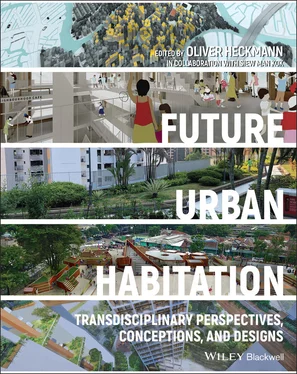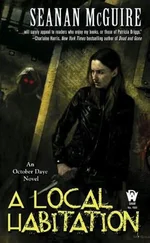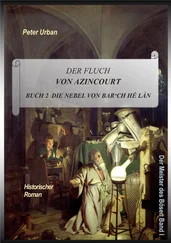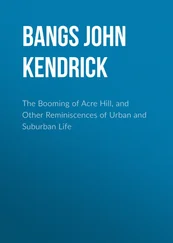1 ...7 8 9 11 12 13 ...28 The Viennese architect Bernd Vlay from StudioVlayStreeruwitz shares about the interdependencies between responsiveness and adaptation in housing typology. Discussing their recent social housing projects’ adaptability is not seen by him as the sole tool for resilient transformations. Its responsiveness rather emerges as curated co‐designs with multiple agencies and operations, significantly impacting also the role of architects.
Yee Wei Lim, a professor for medicine and a health policy researcher from National University of Singapore, and his team discuss how adaptable built environments and people‐responsive social innovations could contribute to the wellbeing particularly of senior citizens ageing in place. Integrative master plans, co‐location of care and health services, and various formal or informal models for intergenerational reciprocal support are presented.
Colin Neufeld from 5468796 architecture and Sharon Wohl from Iowa State University present flexible concepts to adapt to diverse needs during design processes, unprogrammed ‘white‐boxes’ providing residents with choice, and adaptable mini‐apartments as responses to dynamic needs. Open‐ended, collaborative urban designs offer antitheses to rigid master plans, engendering over time adaptability to multiple influences, agencies, and practices of co‐presence.
I myself discuss a design research on high‐rise types that are adaptable and responsive both at individual and communal domains. Societal shifts will necessitate a hybridization of what habitats entail, enabling user‐driven appropriations and relational practices beyond individual domains. Habitats are thus conceived as open‐ended, integrated physical and operational systems, with curated means and tools of sharing and decision‐making.
New Tools, New Approaches
While the other sections discuss needs and opportunities for future urban habitation along three specific themes, the fourth focuses more on the making – and the makers – of design, engineering, and research practices themselves. Sharing about advancements that could have as well been part of the other sections, it discusses how new tools and methodologies and new approaches and design thinking correlate with one another.
The section illustrates how pressing challenges and broadening concerns about environmental and social sustainability, and the societal debates and policy shifts emerging with these push also the diverse contributors to the making of habitats to rethink their impact and responsibility but to also realize and pursue their potential agency for change and innovation. The authors discuss the expanded opportunities given by emerging forms of knowledge, methodologies, and techniques, as continuously evolving means for researchers, designers, and decision‐makers on future habitats to analyse and evaluate social and environmental performances and to design and construct habitats more strategically, efficiently, and responsively. Developing adequate answers is taken as a complex process constantly requesting rethinking about what are appropriate means for the study, evaluation, creation, and communication of situations. It necessitates an ongoing awareness of which methods and tools should consequently be developed, learned, and applied. Well‐informed decision‐making, interdisciplinary collaboration and communicability of findings across domains of expertise gain relevance. An increasing focus on the quality of operation, social and climatic performance and experience of ‘situations’ can be observed, with more attention given to participation and inclusion in habitats.
More significance is given to engender performance‐ or evidence‐driven decision‐making processes. The immense opportunities to refer to qualitative and quantitative data, to the collection of which also designers contribute with new skills, enable to go beyond professional bias and make informed design decisions. Their engagements and capabilities to participate in the development of computational tools for design generation and simulation, of methods for social inquiry and design and of sustainable material systems both in research and practice extend their procedural capabilities significantly.
In this section, the authors from architectural and social design fields and different engineering backgrounds discuss how innovations in design tools, design thinking, and methodologies can cater to social and environmental sustainability and equity of built environments.
Authors from Arup and Michael BUDIG from the Renewable Architecture Lab at Singapore University of Technology and Design write about innovative renewable materials, flexible designs, business models, and digital technologies as a means to decarbonize buildings. Working on climate change, circular economy, and digital innovation, they address methods that actors from across the built environment value chain can employ to reduce energy and material consumption.
A team of social designers from the Care Lab and Holon highlight a set of principles and practices to address social and relational dimensions in the design of future urban habitation. With projects conducted in Barcelona and Singapore, they share about social and service design methods and tools that can provide new ways to foster the kind of caring urban communities needed to respond to key social challenges.
Trevor Ryan Patt, a computational designer focusing on responsive planning for urban environments proposes generative techniques to reveal new potentials for designing mass housing. Instead, accepting the predominant standardization agent‐based modelling can engender adaptative, localized decision‐making processes, with flexible models that enable collaborative and scenario‐driven approaches.
Timur Dogan from Cornell and J. Alstan Jakubiec from University of Toronto discuss how environmental analysis tools can support the provision of comfortable and sustainable human habitats. They share about building performance tools and highlight how new practices provide radical opportunities for environmental quality and carbon neutrality, that will systematically change design processes.
I'd like to conclude by expressing my great gratitude to the many people that were essential to the making of this book. First of all, I'd like to thank my family for all their tremendous patience and support during a long time of me working on the book. I am particularly grateful to Siew Man Kok, my co‐curator at the symposium, as one important base of this publication. His thoughtful and substantial feedback and inputs on the symposium's agenda, his knowledge on Singapore, and his professional experiences as a public housing designer were an essential contribution also for this publication. For the symposium I'd like to thank Mark Wee and Vinson Chua from the National Design Centre Singapore, the administrative team at the Architecture and Sustainable Design department (in particular Connie Wu), and the Design Singapore Council, Far East Organization, Rice‐Fields, and XTRA Design for their generous financial support. Also, the contributions, such as those by the participants from the Housing & Development Board and National Council for Social Services in Singapore, from my then faculty colleagues at SUTD, and of course the inputs from the many contributors from around the globe, illustrate how essential and inspiring the inclusion of diverse players is – not only for a holistic debate of complex thematic frameworks such as in this book but also for sustainable solutions for future urban habitation as such. Last and not least, I'd like to also thank the people at Wiley – Paul Sayers, Viktoria Hartl‐Vida, Todd Green, Amy Odum, and Skyler Van Valkenburgh – also for their patience with the delays that were caused by the global Corona pandemic.
Читать дальше












